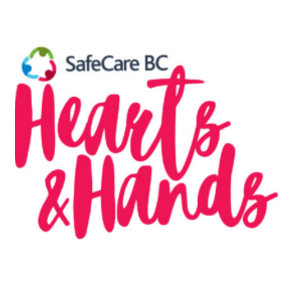Workplace Violence and Harassment Prevention
Workplace Violence in Continuing Care
In recent years, the health care sector has witnessed an increase in the occurrence of violence and aggressive acts towards staff. In fact, over the last 5 years, “assaults/violent acts/harassment’ remains one of the top 5 types of injuries reported to WCB in both long-term care and senior supportive living industries (See the latest report).
According to a report published by Statistics Canada, 34% of nurses working in hospitals or long-term care facilities reported physical assault from a resident over a one-year period and 47% reported emotional abuse during that same timeframe. The report also noted that the clinical area of practice made a difference in the reported incidents, with those working in long-term care and geriatrics reporting the highest at 50%.
Though statistical information is often contingent on many variables, evidence suggests that the risk to health care workers experiencing violent, aggressive, or harassing behaviour is nine times greater than in any other industry. In the continuing care sector, anecdotal evidence also suggests as the population ages and the continuing care sector continues to grow, so will the number of incidents.

Standards and Best Practice

Alberta OHS Legislation

The OHS Act and Code requires employers in Alberta to assess the risks of workplace violence, and to put in place a policy and a prevention program.

Accreditation Standards

Workplace Violence Prevention is a Required Organizational Practice (ROP). A strategy to prevent workplace violence should be in compliance with applicable provincial or territorial legislation and is an important step to respond to the growing concern about violence in health care workplaces.

Canadian Standards Association (CSA) Group
CSA Z1002-12: Occupational Health & Safety Hazard Identification, Elimination, and Risk Assessment & Control sets the foundation for adequate risk assessment process.
Assessing the risk of violence in different settings and targeting interventions based on the identified risks results in positive change and lower worker injury rates, regardless of the intervention.
CCSA Workplace Violence and Harassment Prevention Program
The CCSA aims to reduce the injury rates in continuing care and senior supportive living industries by providing targeted resources to promote the adoption of effective violence prevention initiatives; prevent incidents or injuries caused by violence and acts of aggression, and build a more robust culture of safety. The CCSA also aims to guide our members in building their organization’s Violence and Harassment Prevention Program through focused consultations and collaboration.
 PSHSA Violence, Aggression, and Responsive Behavior (VARB) Tools
PSHSA Violence, Aggression, and Responsive Behavior (VARB) Tools

On May 15, 2017 the Ontario Ministry of Labour released “The Workplace Violence Prevention in Healthcare Leadership Table Report”. This report provided recommendations from healthcare stakeholders, and will allow Ontario to lead the way with producing resources to prevent violence in the Healthcare Sector. It recommended the use of Public Services Health and Safety Association (PSHSA)’s tools to provide workplaces with a consistent, scalable and consensus-based approach. CCSA has adapted these violence and aggression prevention tools and resources and we acknowledge the hard work the PSHSA has done in the development and sharing of these valuable resources for our members in the Alberta Continuing Care Industry.
The Five Step Process to building or evaluating your Workplace Violence Prevention Program:
 Securing Leadership Commitment
Securing Leadership Commitment
 Assessing Your Program Needs
Assessing Your Program Needs

Developing the Program Components
 Implementing the Program
Implementing the Program
 Evaluating the Program
Evaluating the Program
Addressing Violence and Harassment in your Organization
Where Do I Start?
Explore the 5 Steps
Ask a Consultant
CCSA Guided Support
Ontario's PSHSA Violence and Aggression Resources Terms of Use
Accessing the PSHSA violence prevention materials for use in the Province of Alberta is with the agreement that the terms and conditions will be met under the license agreement between PSHSA and the CCSA.
The resources in the CCSA Violent and Harassment Prevention Program are aligned with the content from PSHSA violence prevention materials. These documents and resources may have references to the Ontario context and legislative requirements specific to the Province of Ontario. Though the CCSA has adapted these for use in Alberta, users of these resources are still advised to reference the Alberta OHS legislation.


